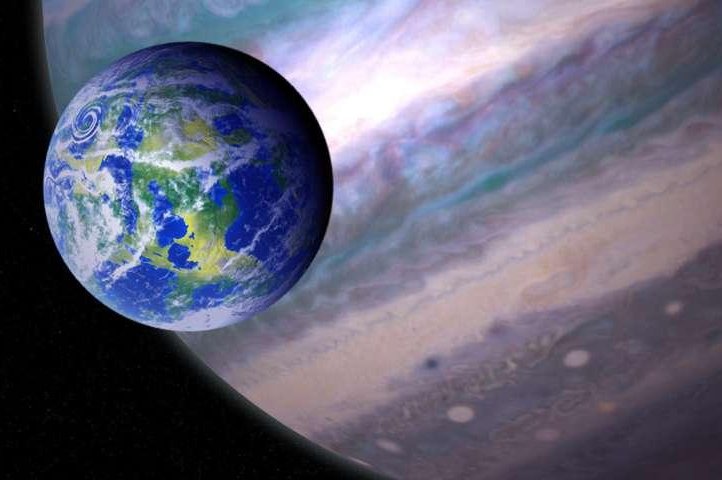An artistic rendering shows a habitable exomoon circling a gas giant. Photo by NASA/GSFC/Jay Friedlander/Britt Griswold
June 14 (UPI) -- Astronomers have identified 121 giant planets that potentially host habitable moons. Scientists believe the next generation of telescopes will be able to target alien moons in search of signs of life.
Scientists identified the candidates among exoplanet data collected by NASA's Kepler telescope. Kepler's main goal is to help astronomers locate habitable planets outside the solar system.
Exoplanets are said to exist in the habitable zone when they orbit their host star at a distance that allows water to persist in solid, liquid and gas forms.
Earth-like rocky planets are the first choice for astronomers searching for potentially habitable alien worlds, but as recent studies inside the solar system have revealed, moons surrounding gas giants also possess the potential for life.
Scientists, for example, believe Saturn's moon Enceladus possesses all the ingredients needed for life.
Faraway gas giants within the habitable zone of their hosts stars may host moons similar to Saturn's Enceladus and Jupiter's Europa.
"There are currently 175 known moons orbiting the eight planets in our solar system," Stephen Kane, an associate professor of planetary astrophysics at the University of California, Riverside, said in a news release. "While most of these moons orbit Saturn and Jupiter, which are outside the Sun's habitable zone, that may not be the case in other solar systems. Including rocky exomoons in our search for life in space will greatly expand the places we can look."
Kane and her colleagues published their survey of gas giants with potentially habitable moons in the Astrophysical Journal.
Though gas giants are less common within stars' habitable zones, each one could potentially host several habitable moons.
Astronomers have yet to identify a moon outside the solar system, but now they have at least 121 places to look for one.
"Now that we have created a database of the known giant planets in the habitable zone of their star, observations of the best candidates for hosting potential exomoons will be made to help refine the expected exomoon properties," said Michelle Hill, an undergraduate student at the University of Southern Queensland. "Our follow-up studies will help inform future telescope design so that we can detect these moons, study their properties and look for signs of life."















